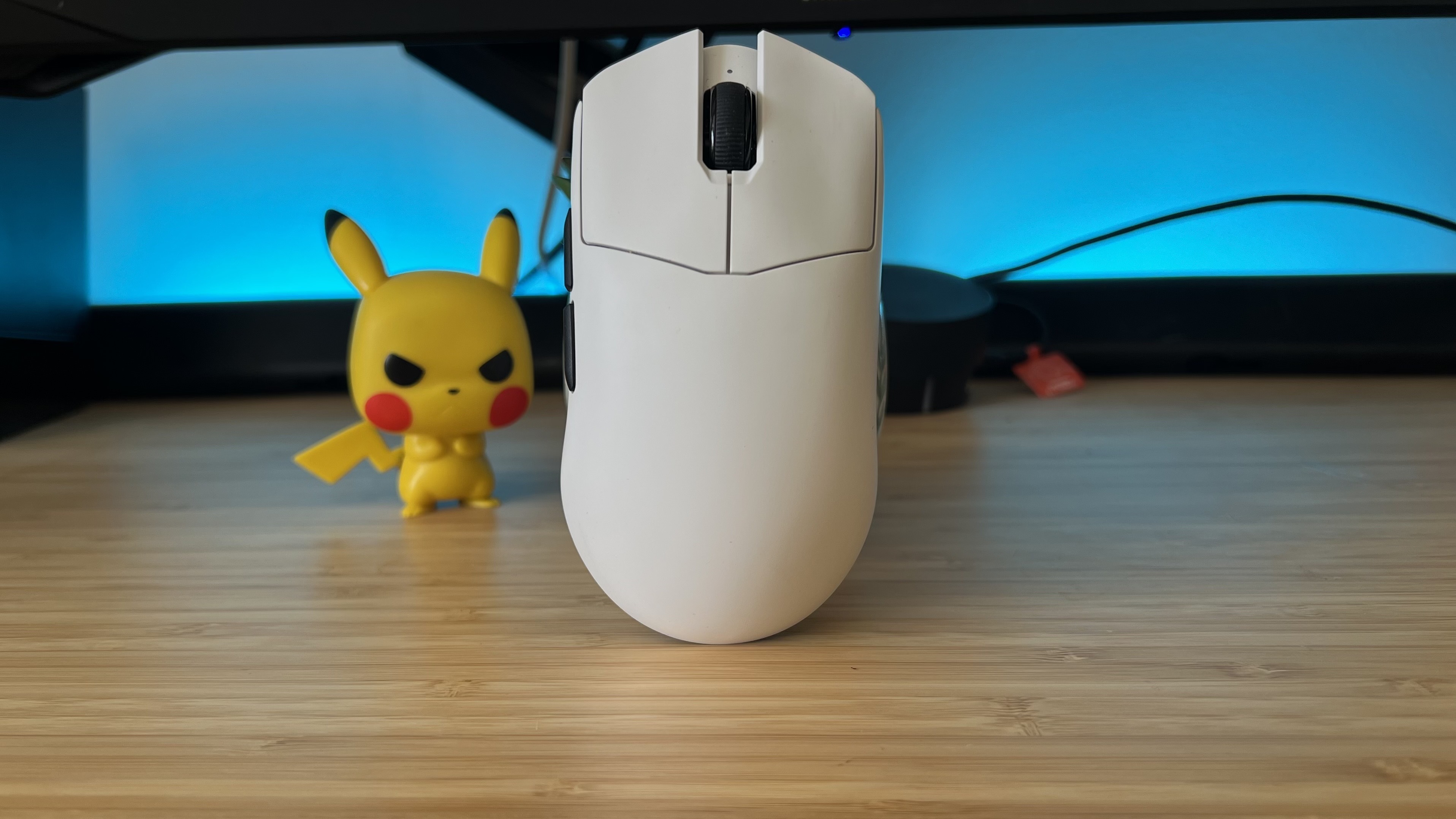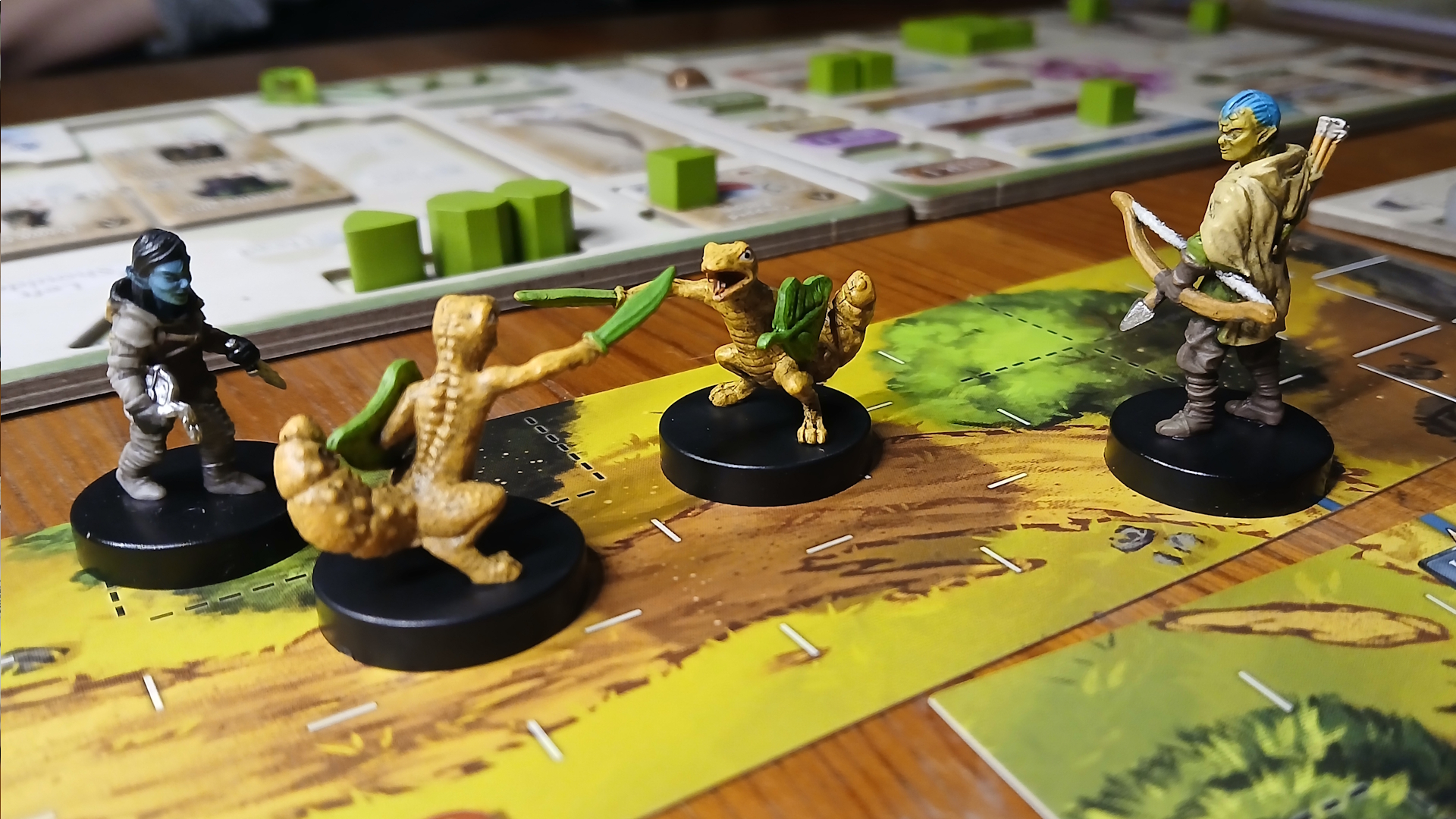GamesRadar+ Verdict
The Cougar Revenger Pro 4K has so much going for it, but falls at the final hurdle. With an astonishing battery life, super low weight, and slick sensor this lower mid-range rodent was primed to take on mainstream brands. However, a dodgy 4,000Hz receiver, low build quality, and lack of availability mean it's a little harder to fully recommend.
Pros
- +
Excellent battery life
- +
Comfortable shape
- +
Satisfying clicks
- +
Lightweight form factor
Cons
- -
4,000Hz receiver can lag
- -
Lower build quality compared to competition
Why you can trust GamesRadar+
The Cougar Revenger Pro 4K is a tricky one. It launched at $69.99 in the US, but has been pretty much impossible to find at that price recently, with Amazon currently only listing a few at around $95. At its MSRP, it's well worth a look - undercutting more mainstream brands with 4,000Hz wireless polling (in theory), a solid Pixart 3395 sensor, and a fantastic battery life. If things stay near $100, though, things aren't quite so clear.
This is the threshold where some of the best gaming mouse models on the market come to play, and with a cheaper build quality and a problematic 4,000Hz polling dongle, the Revenger is going to struggle.
Price | $69.99 (MSRP), $95 - $105 when tested |
Connection | 2.4GHz / Wired |
Shape | Right-handed |
Buttons | 6 |
DPI | 26,000 |
IPS | 650 |
Switches | Omron 70M Optical |
Weight | 55g |
Battery | Up to 150 hours (1,000Hz), up to 45 hours (4,000Hz) |
Max polling rate | 4,000Hz wireless |
Cougar Revenger Pro 4K: Available at Amazon
Design
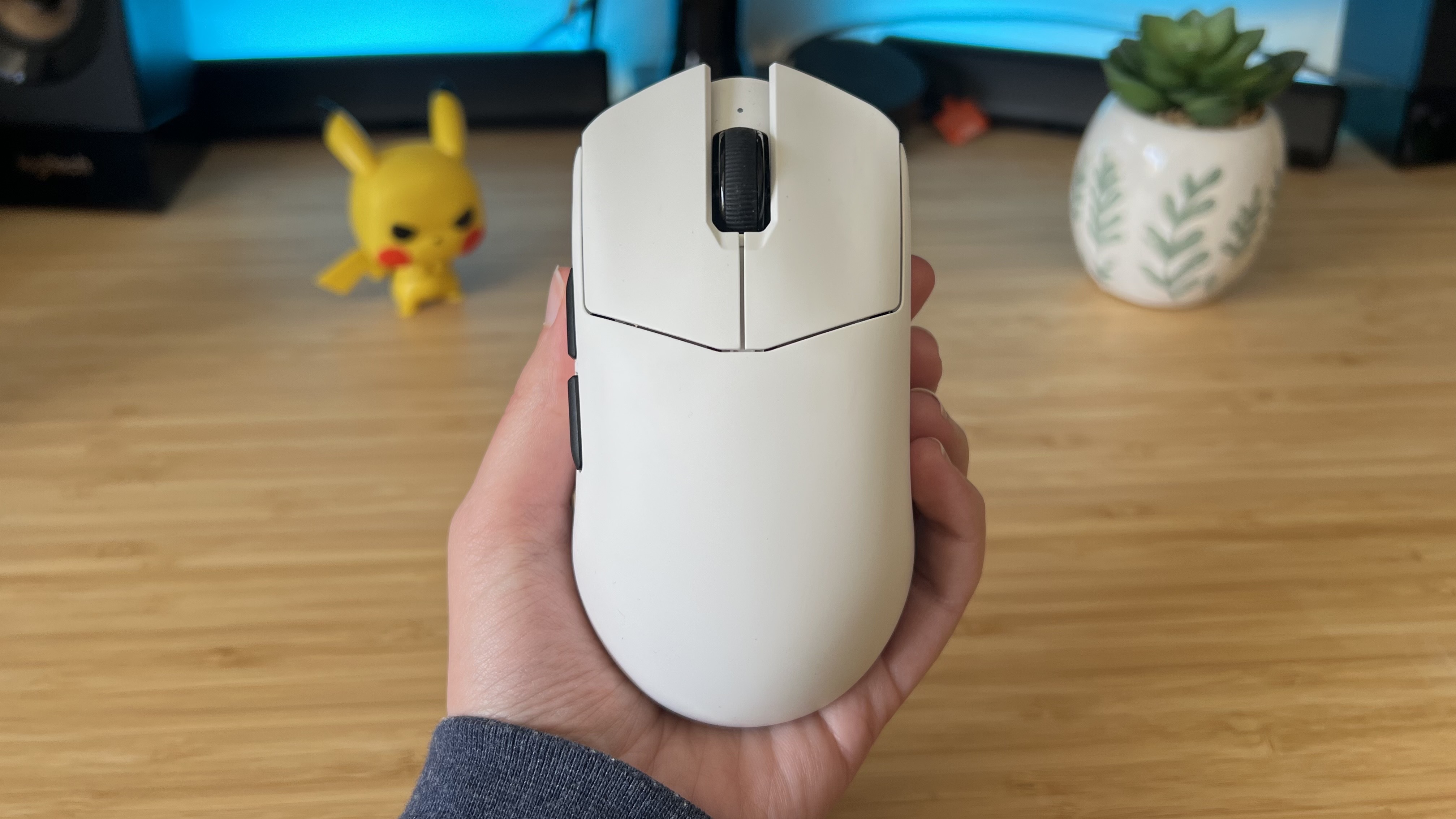
Cougar sent me both a black and white colorway of its symmetrical gaming mouse, and I instantly ripped open the white model first. It's a slick aesthetic, with a clean white chassis and jet black side buttons and scroll wheel quickly reminding me of the Endgame Gear OP1 8K, only without that cable sticking out the front.
The black version is more tame, after all this is the colorway many come to expect from their gaming mice, but it's still elevated with a brassy 'Cougar' logo stamped on the side. That's the only piece of branding you'll find topside, making for a nice relief from the RGB logos and etched stamps of other designs. The white model looks crisper, but it's certainly harder to keep clean. It's a magnet for the everyday grime of daily life.
Both pointers are covered with a soft-touch finish over plastic chassis', imitating the less textured surfaces of mice like the Razer Viper V3 Pro and Alienware Pro Wireless. While these pointers manage to stay grippy, though, the Cougar Revenger Pro 4K can sometimes slip. Grip tape is included in the box and I only noticed the rodent getting away from me during faster combat moments, but it's not quite as solid a surface as you'll find from more mainstream devices.

This is a cheaper gaming mouse, with (at MSRP) a $70 price tag, and there are signs. Squeezing the Revenger's sides revealed more creaking than I found on the similarly priced Razer Viper V3 Hyperspeed and there's a considerable amount of flex when squeezed from the top and bottom. These aren't going to impact your day to day play with the device, but do raise some concerns over longer term durability.
At 124 x 65 x 38mm, the Cougar Revenger Pro 4K is slightly larger than the Glorious Model O 2 Mini in all regards, with a taller hump along the back offering better purchase for a palm hold in particular. It's roughly the same width and length as the Razer Viper V3 Hyperspeed, but slightly lowers the maximum height from 41mm to 38mm. That's a slightly more well-rounded set of dimensions than either the flatter (fingertip / claw-friendly) Glorious model or the more palm-minded Viper.
I found it comfortable enough to run with my usual claw grip most of the time, with enough space at the rear for finer pivot movements between the base of the mouse and my palm and a slightly indented left flank making for a secure hold overall.
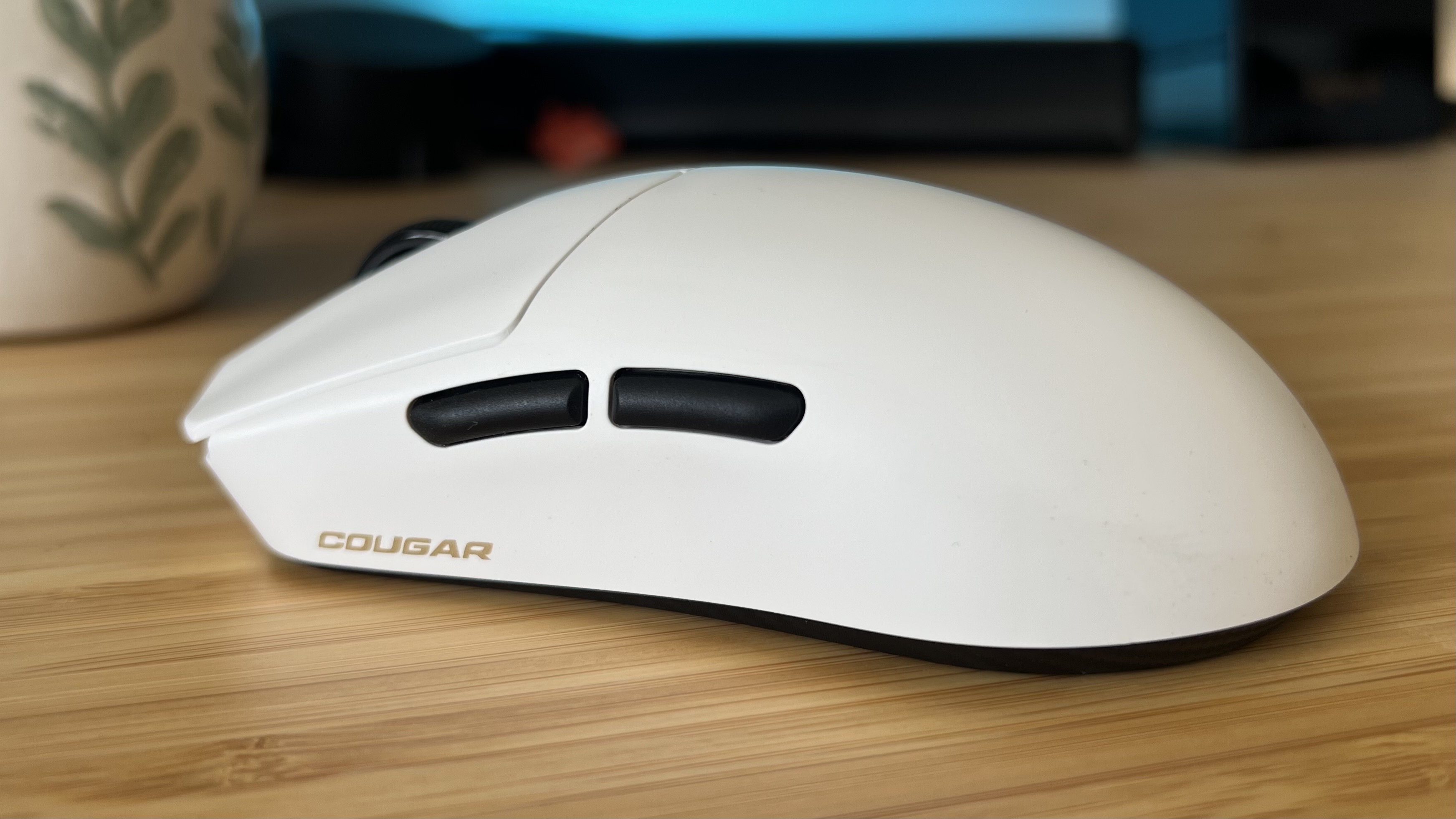
What's perhaps more impressive is its weight. The Cougar Revenger Pro 4K squeezes everything down into a 55g form factor - that's lighter than the majority of models on the market at this price. Keeping things nimble on the battlefield is always a goal, but making sure that weight is balanced and sturdy can trip smaller brands. Cougar has navigated this line particularly well, beating the Alienware Pro Wireless, Logitech G Pro X Superlight 2 DEX, and Glorious Model O 2 Mini in the weight arena while still feeling grounded at the same time.
Features
With a Pixart 3395 sensor and Omron optical switches, the Cougar Revenger Pro isn't doing anything particularly innovative in its components. This is a classic 26K DPI / 650 IPS optical eye seen in a number of competitors' devices, from Alienware to Glorious, and it represents some of the best value for money on the market right now. A newer 30K DPI / 750 IPS Pixart 3950 has hit the shelves since the heyday of this tracker, but at this mid-range position the 3395 represents the bests of both performance and affordability.
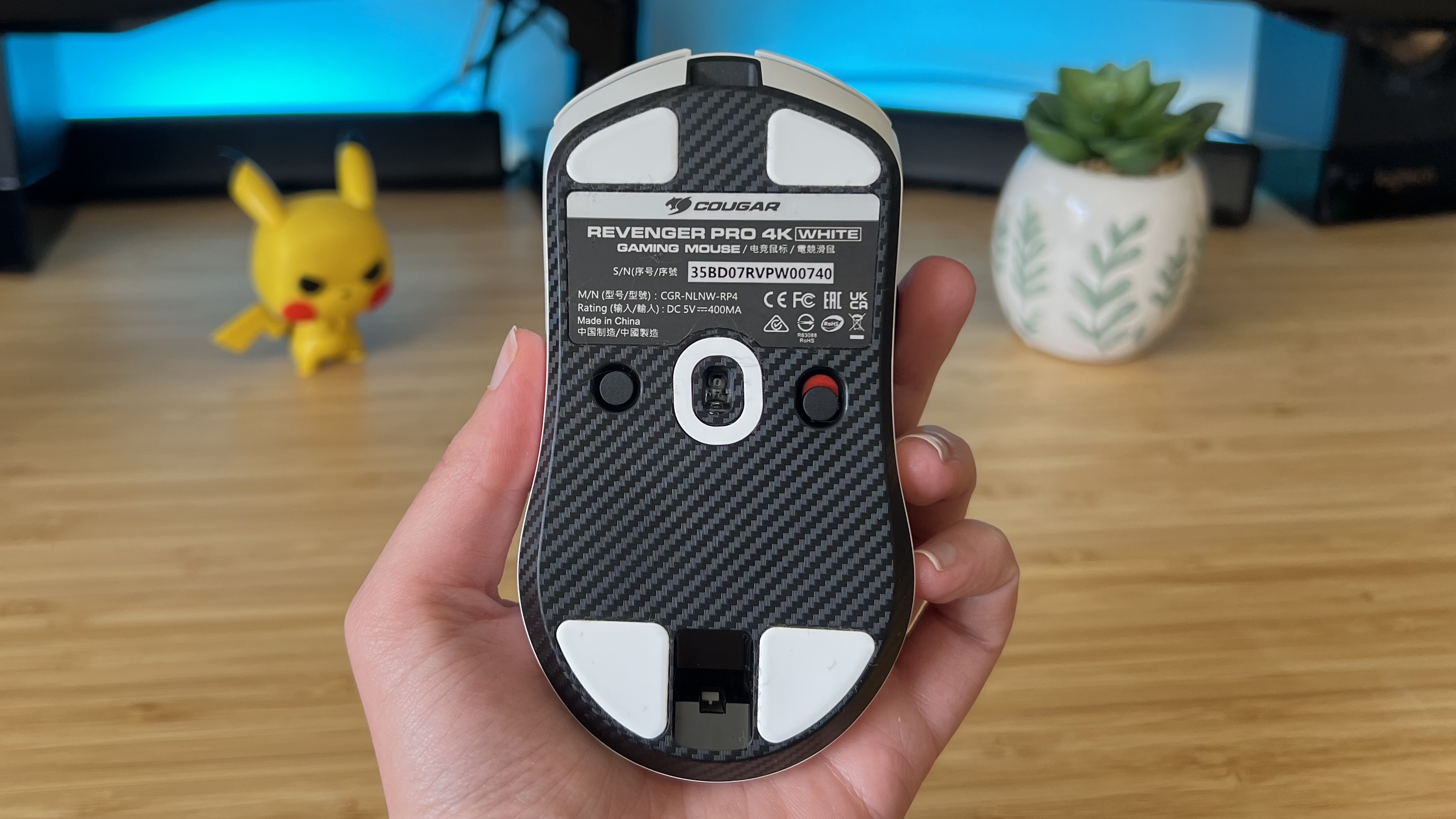
Those switches offer a deep, responsive click with a little more travel distance than more esports-focused pointers. That's not necessarily a bad thing, on the contrary these clickers provide just enough tension to avoid accidental presses while remaining fast and comfortable during repeat inputs. They're crisper-feeling than the mechanical switches inside the similarly-priced Razer Viper V3 Hyperspeed, which can feel soft by comparison. That optical design also means actuation can run a little faster as well.
Polling rate is a bigger issue for competitive players, but if you're finding yourself climbing the leaderboards and don't want to splash out on a flagship speedster like the Viper V3 Pro or Logitech G Pro X Superlight it's worth noting you can bump up to 4,000Hz wireless polling. That's a happy medium for me, 1,000Hz will serve the vast majority of players just fine - the increase in speed as you climb that ladder will only be noticed by the top 1% of competitors. However, if you do want a little more juice just in case, Cougar readily provides without making you pay for unnecessary 8,000Hz rates. It should be noted now, though, that I do have some concerns over that 4,000Hz polling mode.
Some more expensive mice can accommodate a wide range of polling rates from one dongle, for others it's a little more complicated. Like some of the best Razer mice, you'll need to use a separate receiver when scaling all the way up to 4,000Hz though, unlike Razer, it's included in the box. That's a blessing and a curse - you won't need to shell out for an additional accessory, but splitting the two receivers is a headache. I can only see myself losing one and being stuck with the other, and switching a full USB around every time I want to adjust my polling rate gets tiresome quickly.
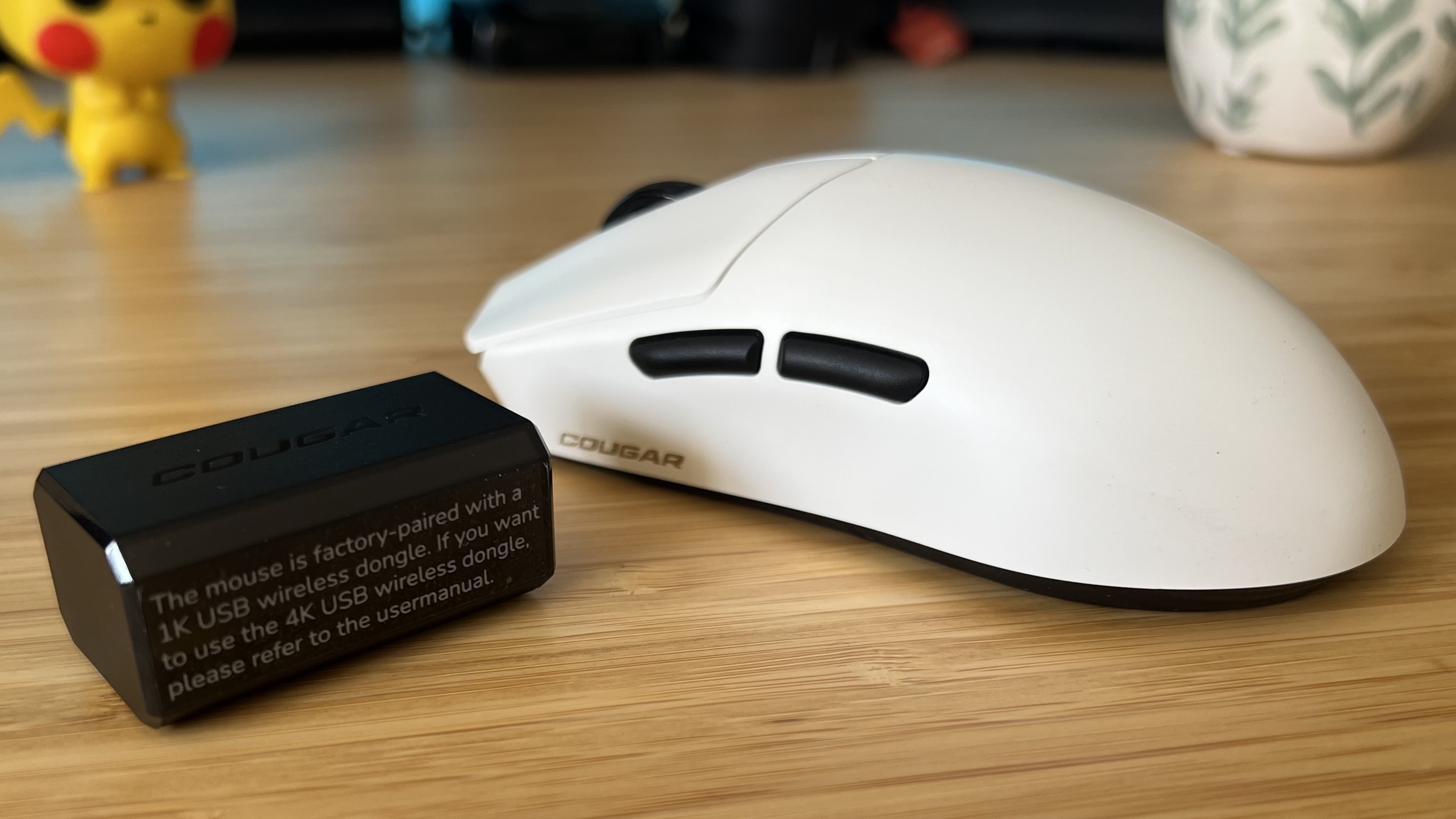
There's a silver lining here, while the 4K dongle is huge and requires a cabled connection anyway (tough luck if you're trying to cut down on your wires by opting for a wireless gaming mouse), keeping it separate does make the Cougar Revenger Pro 4K more portable. Unlike the Razer Viper V3 Pro, which needs the full kit to work, it's much easier to simply pack the 1,000Hz receiver when travelling.
Unlike many cheaper gaming mice from smaller brands, the Revenger Pro 4K does have its own software. This is far simpler than competitors' options, but it does offer a clean and efficient interface for setting keybindings, fiddling with DPI settings, changing polling rates, and configuring lift-off distance. There are also a few additional customization options for angle snapping and ripple control to toggle on and off as well.
All in all, it's a light and breezy software with simple controls and intuitive menu systems. It's not as flashy as SteelSeries Engine or in-depth as Synapse, but it gets the job done without tanking your system.
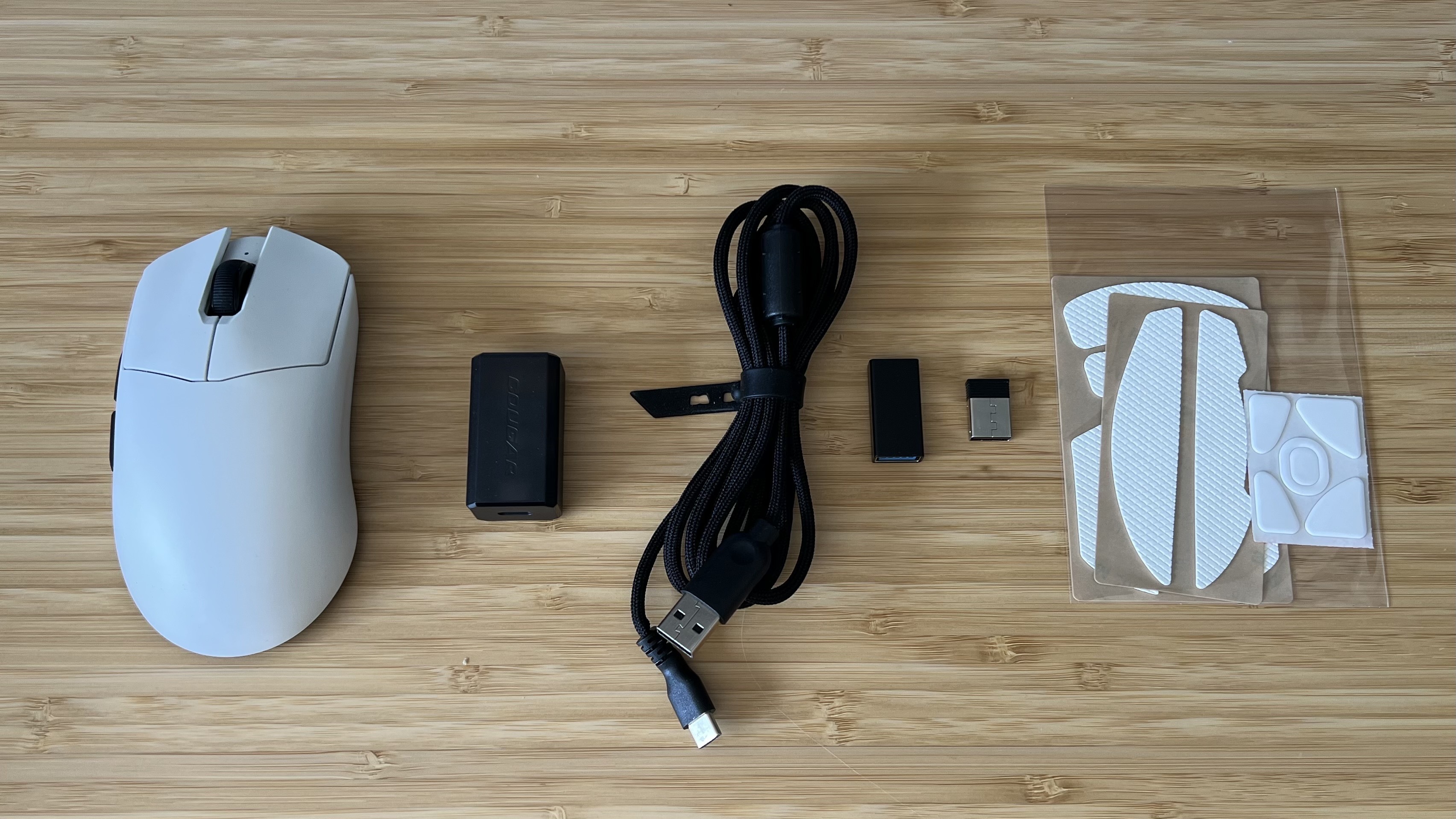
The battery life is phenomenal. I was skeptical when I first saw that 150-hour figure from Cougar itself. That's the longest-lasting rechargeable 2.4GHz battery life I've seen in a mouse weighing just 55g, and it really does live up to that estimate. I ran the mouse for four weeks before that little red LED starting flashing at me, that's at between eight and ten hours on weekdays and three to four hours per weekend day. The hardest working gaming mice I've tested so far are the Razer Basilisk V3 Pro 35K at 140 hours, the Alienware Pro Wireless at 120 hours, and the Turtle Beach Kone II Air at 130 hours, and the Cougar has them beat.
So what's missing from similarly priced mice? The Razer Viper V3 Hyperspeed ($69.99) can bump those speeds up to 8,000Hz, but you'll need to buy a separate receiver to get there, and adds 'Dynamic Sensitivity' to its sensor allowing for a more natural DPI curve based on your movement speed. The MSI Clutch GM31 ($69.99, though regularly on sale for less) comes with its own wireless charging dock. And the Endgame Gear OP1 8K ($74.99) can reach up to 8,000Hz polling though drops your wireless connection to get there.
Performance
Gaming with the Cougar Revenger Pro 4K proved pleasant and precise, with the low weight and snappy clicks offering both speed and precision in single-player and competitive titles alike. The sensor holds out well, generally keeping up with faster movements, though not quite offering the resilience of the 888 IPS speeds of the Logitech G Pro Superlight 2 DEX.
That translates to a slightly heavier-feeling glide in faster moments, but I only noticed the difference when lining up the same shots I have a thousand times before and directly comparing between the two speeds. We're also talking about (at MSRP) a $90 difference in price, so can't complain.
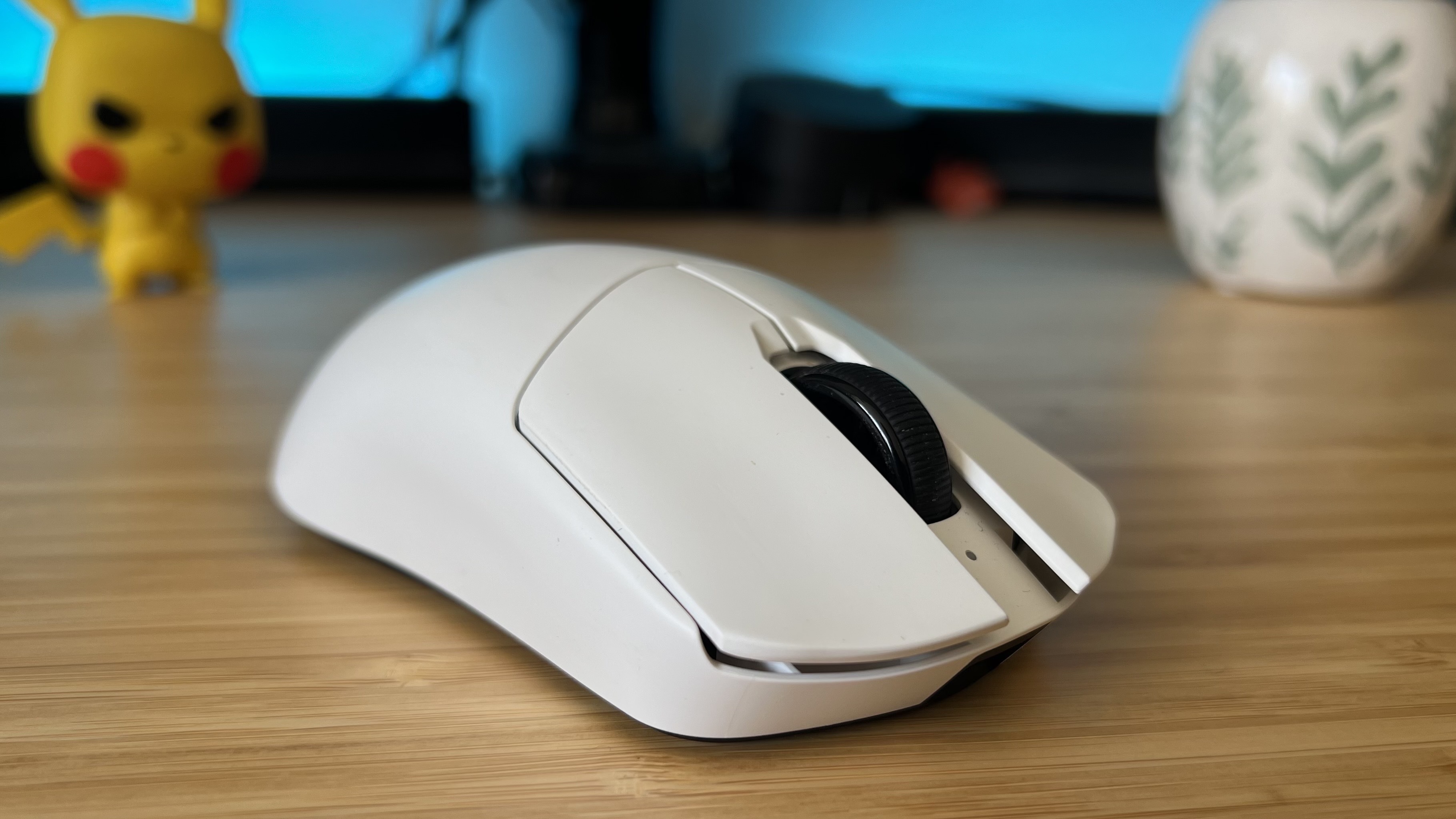
The shape and weight work to keep movements zippy while allowing for a finer tuning of aim in slower sniper situations, especially thanks to that slightly shorter length running into the base of the palm.
Switching over to the 4,000Hz dongle is no mean feat. The whole receiver needs to be paired to the mouse, which means removing all dongles from the PC, holding the left, right, and scroll buttons, and controlling the software with the space button. It doesn't take too long, but the on-screen instructions don't match the user guide included in the box (with each suggesting a different color for the pairing light and instructing for different keyboard buttons to be pressed). I got there fairly quickly, but it felt like a rocky process. There was little difference between the 1,000Hz and 4,000Hz polling rates in my everyday gameplay, at least - when it was working.
The first time I paired and played with the 4,000Hz dongle everything was fine, but after waking the mouse from sleep and trying again things got a little patchy. Even with no other 2.4GHz receivers plugged in (or Bluetooth devices switched on), the mouse would drop connection for about a second fairly frequently. At some points I could barely make it across the screen without input dropping out.
After all that, you'll need to repeat the same pairing process to get back to the 1,000Hz receiver.
Should you buy the Cougar Revenger Pro 4K?
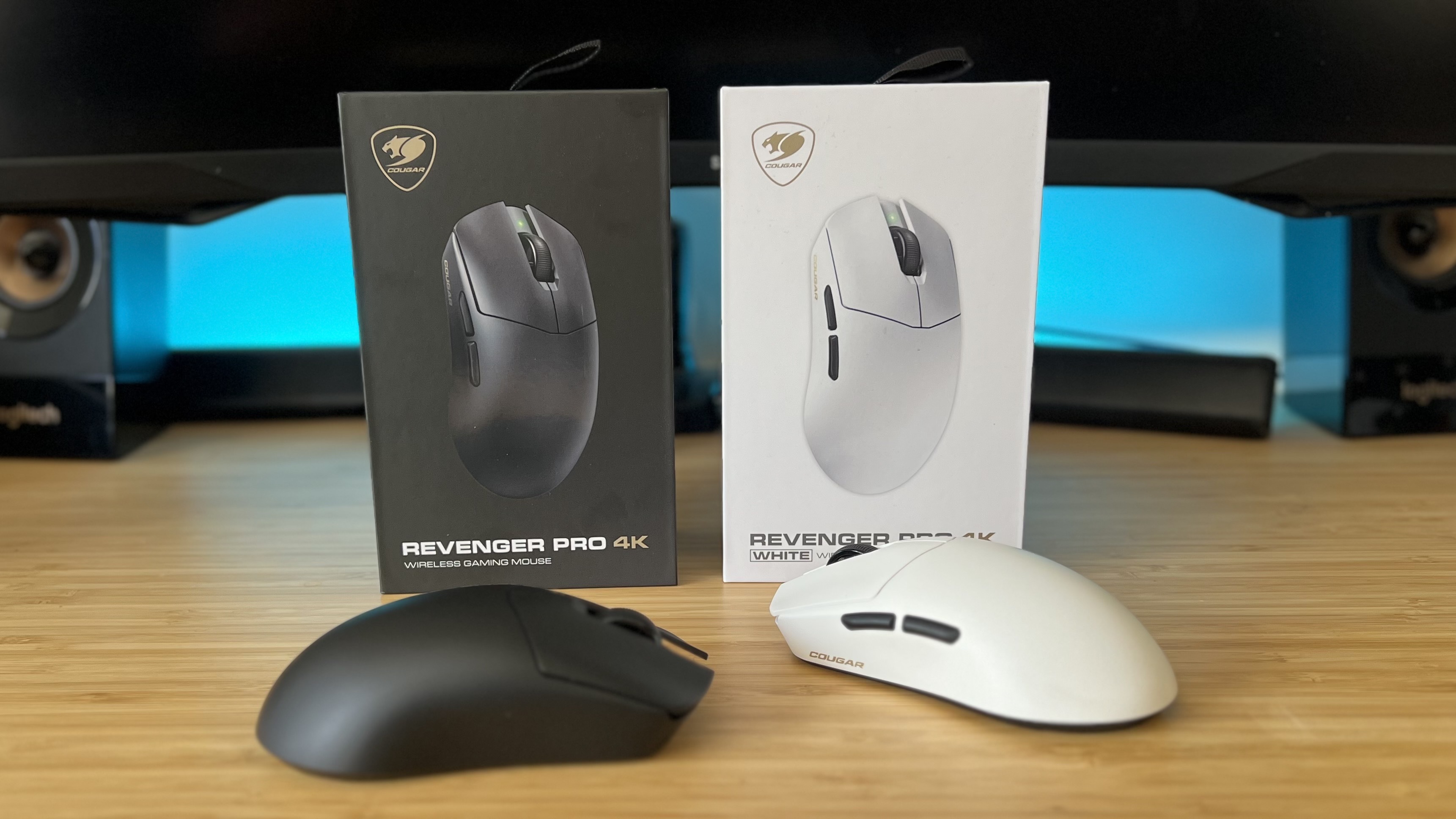
Taking that dodgy 4,000Hz receiver out of the picture for a minute, the Cougar Revenger Pro 4K actually offers a solid proposition. It's got one of the best batteries I've tested in a lightweight gaming mouse, glides and tracks well at a variety of different speeds, and offers an efficient, intuitive software system. It's unfortunate that the 4K reception needs a little more work, hopefully via firmware updates in the future, and requires a finicky setup process that could prove frustrating.
It's also worth bringing us back to the fact that I haven't seen that $69.99 MSRP for some time now, with low stock levels at Amazon giving us some rogue prices closer to $100.
All of that to say, the Cougar Revenger Pro 4K could have been a fantastic gaming mouse, but it's lack of availability, cursed 4,000Hz wireless polling, and lower build quality in the face of similarly priced competition stops it from being an easy recommendation. If it pops back onto the shelves for $69.99 it will be worth investigating in the future, but for now I'd stick to the Razer Viper V3 Hyperspeed at the same price, or spring for the Razer DeathAdder V3 Hyperspeed at $99.99 / £99.99.
Comfort | 4/5 |
Speed | 4/5 |
Programmability | 3/5 |
Connectivity | 2/5 |
Battery life | 5/5 |
How I tested the Cougar Revenger Pro 4K
I spent four weeks using only the Cougar Revenger Pro 4K for all my daily work and play. I primarily played Indiana Jones and the Great Circle, Fallout 4, and Avowed with the device, while also testing across my usual competitive roster of CS2 and Apex Legends. My DPI was set at 3,200 for the duration of testing. I ran the battery from 100% to 0% at a 1,000Hz polling rate and, used the device in both this and 4,000Hz polling settings for as long as possible. For more information on how we test gaming mice, check out the full GamesRadar+ Hardware Policy.
I'm also hunting down all the best Logitech gaming mice and the best left-handed gaming mice for more options. Or, take a look at the best mouse pads for gaming to complete your setup.

Managing Editor of Hardware at GamesRadar+, I originally landed in hardware at our sister site TechRadar before moving over to GamesRadar. In between, I've written for Tom’s Guide, Wireframe, The Indie Game Website and That Video Game Blog, covering everything from the PS5 launch to the Apple Pencil. Now, i'm focused on Nintendo Switch, gaming laptops (and the keyboards, headsets and mice that come with them), PS5, and trying to find the perfect projector.
You must confirm your public display name before commenting
Please logout and then login again, you will then be prompted to enter your display name.
